Labrador Retrievers are known for being a very intelligent, high-energy dog breed. But perhaps the behavior you’re seeing from your Labrador is a bit extreme, and your Lab’s energy needs seem to go beyond the normal range for a typical active dog.
You might be seeing occasional hyperactivity in your dog, or you might be dealing with a dog that seems to be more high-energy from the moment they wake up to the moment bedtime arrives.
There are five possible causes behind unwanted hyperactivity in your Labrador, including:
We’re going to cover each of these in more detail and give you some strategies to help you solve them in a safe and positive way.
(This article may contain affiliate links. As an Amazon Associate I earn from qualifying purchases. Learn more)
Lack of Exercise
The biggest reason you might see hyperactive behavior in your Labrador is due to a lack of adequate physical activity and exercise.
Labs are a high-energy breed of dog that need a lot of daily activity to meet their physical demands. Labradors are strong, athletic, and playful dogs who need daily walks or games of fetch and retrieving to tire them out.
Your Lab should be getting age-appropriate amounts of physical play and exercise. Two walks a day of 15 minutes or several games of fetch to tire out your Lab are recommended, depending on the age and health of your dog.
Older or younger Labs may have different physical activity needs. If you’re not sure how much exercise your dog should have, ask your veterinarian for their recommendation based on the health of your particular dog.
Solution: Physical Activity
The solution to a hyperactive dog who has excessive energy to burn off is to give them more physical activity. This may be a challenge for you if you live in a home without a yard or if you’re in a smaller living space.
But it’s important for your Lab to have room to run or to get out and smell what’s happening around the neighborhood on a few walks a day.
Create a routine where you walk your Lab morning and evening to burn off excess energy at the start and finish of every day. If you have a fenced yard, take your Lab out several times a day for quick games of fetch.
Even a five-minute game of fetch can tire your Labrador out enough to take off excess energy and curb some of their hyperactivity.
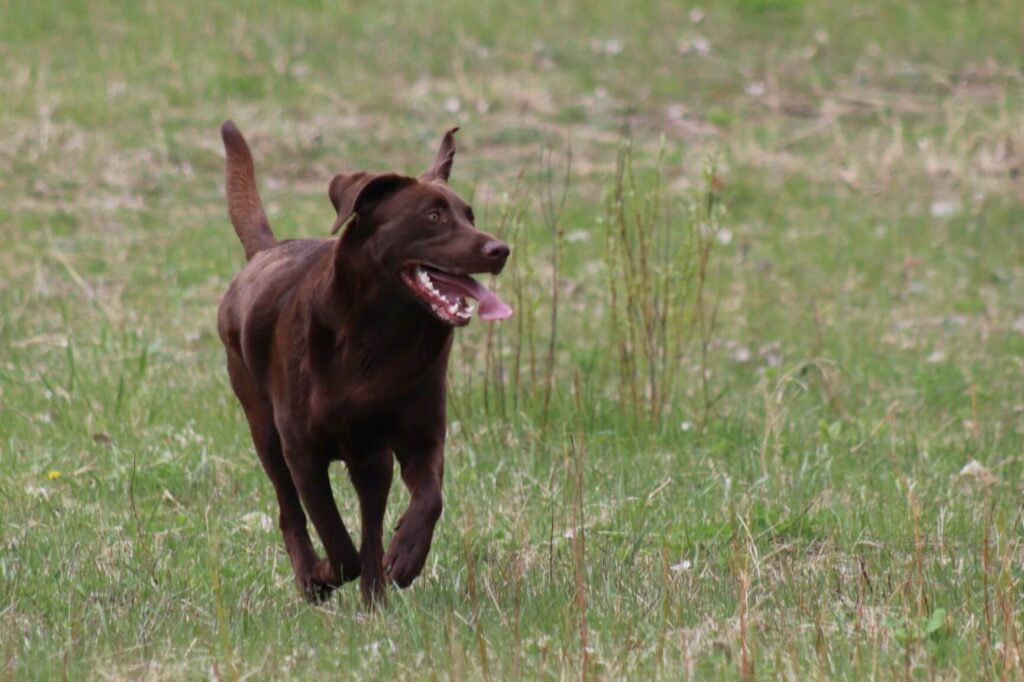
Find a local dog park if you don’t have a fenced yard or enough outdoor space by your home. If you’re at work all day, and your Lab doesn’t get enough exercise while you’re gone, consider a doggie daycare facility, even just once or twice a week.
You might find that your Lab is so exhausted for several days after returning home from just one full day (or even a partial day) of play at doggie daycare.
Boredom
Labradors are extremely intelligent dogs, and they can often get into a little bit of mischief when they aren’t mentally kept occupied. You might see hyperactive behavior in your Lab manifest itself as destructiveness, where your Lab eats or destroys items such as shoes, clothes, books, furniture, and toys.
Labs can also maniacally tear apart their own dog items in a hyperactive state, such as shredding their dog bed, destroying their dog crate, and enthusiastically tearing up dog toys. It’s normal for your Lab to be excited about their toys, but sometimes a hyperactive Lab will be consumed with destruction beyond normally playing.
Labs left home alone all day or not given adequate human interaction can become bored, destructive, and also hyperactive either while still alone or when their humans return.
Solution: Mental Stimulation for Your Dog
The solution for hyperactivity in dogs caused by boredom is to give your dog mental stimulation and things that will keep their attention and focus.
To start with, during meal times you can utilize slow-feeder dog bowls, which provide a bit of a challenge to your dog and slow down how fast they eat.
You can also use “puzzle feeders” when feeding them their food, which are a special kind of dog bowl or toy that holds dry dog kibble.
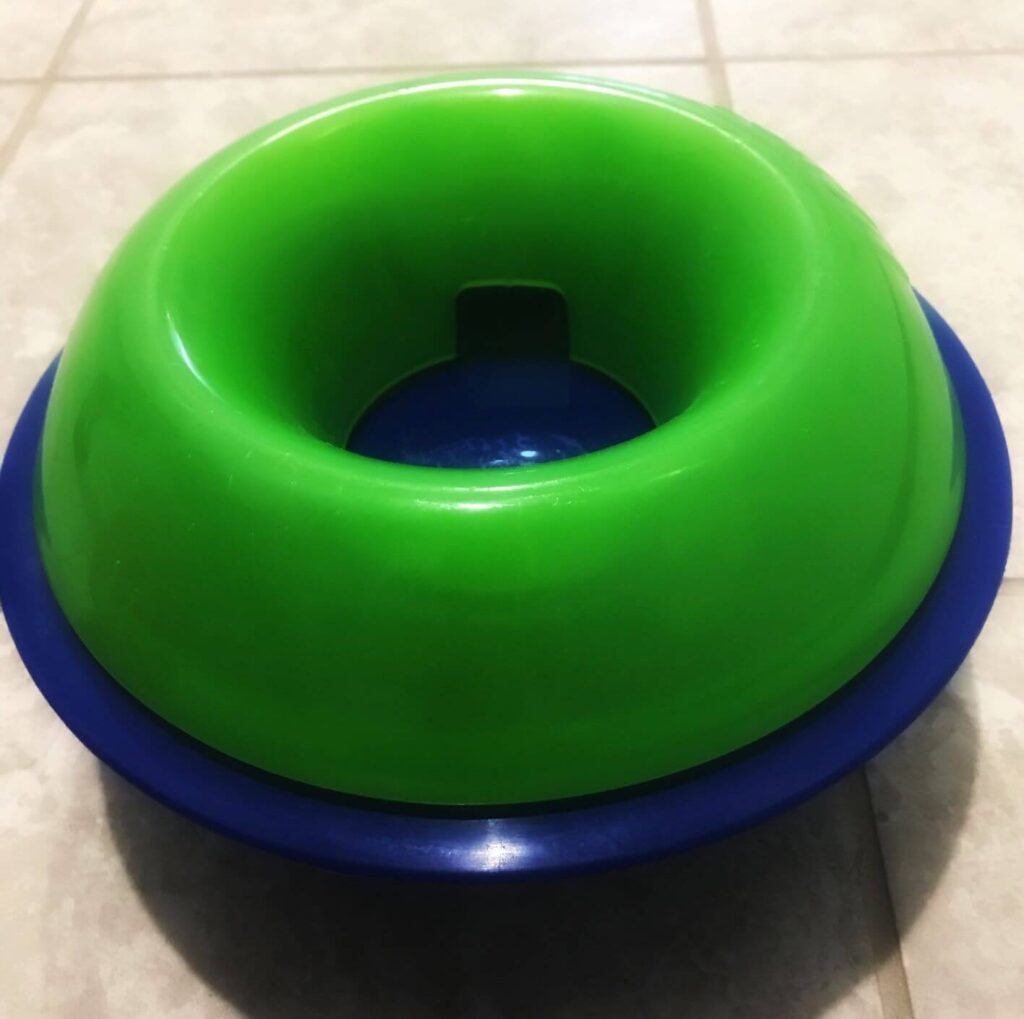
Instead of releasing all their food at once, the puzzle feeder will require the dog to do a little bit of extra work to get their food out, such as rolling it around or turning it over.
The one shown above requires your dog to balance the feeder in a certain way and at a specific angle to get a piece of kibble released.
Your Lab will be focused on getting the food out and it will take a lot longer (and much more work) for them to do so.
Another idea to mentally stimulate your dog is to use Kong toys, which you can fill with food products such as peanut butter, yogurt, and mashed bananas, and freeze. In the same idea as puzzle feeders, Kong toys require your dog to do work to get the food reward.
These toys can occupy your dog for anywhere from five minutes up to almost an hour, depending on how intelligent your Lab is and how motivated they are to get their reward.
If you’re not home for longer periods of time, and you think your Lab might be getting bored in your absence, you can stream different types of dog TV shows using YouTube channels or your TV provider. You can also leave music on for your dog when you’re not at home to battle boredom.
In addition, you can schedule a dog walker to come take your Labrador on a mid-day walk to tire them out, which will help them also get love, hugs, and human interaction to conquer boredom during the day. This can help so you’re also not greeted with excessive energy the second you arrive home.
Health & Food Issues
Sometimes health issues can cause hyperactive behavior in dogs, especially in Labradors. There might be an underlying cause of hyperactivity due to side effects of medications your pet might be taking, or due to a medical condition.
Certain foods might also cause excitability and hyperactivity in dogs. In our article on the Dog Zoomies, which are unexpected and sudden bursts of energy coming from your dog, there can be food triggers that result in the onset of Dog Zoomies or general hyperactive behavior.
For example, one of our Labradors reacted strongly to buttercream frosting on his vanilla birthday cupcakes one year and had an unexpected and severe case of hyperactivity and Dog Zoomies.
We’ve learned our lesson and now leave the frosting off his cupcakes on his birthday from now on!
Solution: Medical & Food Evaluation
If your Labrador has frequent and constant periods of hyperactivity that you can’t attribute to another cause, you should have your veterinarian evaluate your dog and assess for any possible underlying medical conditions.
Be sure to also ask about the medications your dog might be taking to see if they could be causing hyperactive behavior.
Make sure you’re aware of any and all foods that your Labrador eats, including treats and human food they might be getting, both intentionally and unintentionally. You might not be aware that someone in your family is sneaking your Lab treats that could be causing some hyperactive behavior.
Fear
Another possible cause of why your Labrador is so hyper could be a reaction to something in their environment that is causing them fear or anxiety.
Sometimes dogs will react with excessive energy as a means of coping with a stressful situation or in an attempt to get away from too much stimulation in their environment.
Loud noises such as fireworks, sirens, loud music, thunderstorms, other barking dogs, or other sounds could cause fear in a dog that either isn’t used to them or had a previous bad experience with them. This is especially true if you’re adopting a rescue Labrador whose prior history you might not be familiar with.

Strange people, or people whom your dog doesn’t know (or doesn’t like), might also create fear, anxiety, and hyperactivity in your Labrador.
Some dogs might react by hiding, while other dogs may react by excessive energy and attempting to jump or run away to remove themselves from the situation.
Solution: Change the Environment
If fear or anxiety is driving hyperactivity in your dog, do what you can to remove them from the environment that’s triggering the behavior.
If you know there’s a person that they do not like, or a dog or other pet they don’t get along with, don’t force the relationship, and let your dog retreat to a quiet place for safety such as their crate or a bedroom. Sometimes introducing a new dog to another dog can create excessive enthusiasm and hyperactivity, so read how to introduce a new dog the right way.
Talk with your vet if your dog has a reaction to scary sounds like thunderstorms or fireworks to see if they have any recommendations for treatment they can offer you. You can purchase types of shirts that claim to help dogs with storm-related fear and anxiety, though we haven’t tested those on our Labs to comment on their overall effectiveness.
If there is a holiday typically associated with fireworks, like the 4th of July in the US or New Year’s Eve, have a plan for how you’ll reduce the possible discomfort to your dog, or take them to a location farther away from the celebration.
You can also play music or turn on dog TV streaming videos to help reduce the upsetting sounds in your dog’s environment if you can’t leave.
This is also a great time to give your dog one of the mentally stimulating dog toys mentioned above such as a Kong or puzzle feeder to help distract them from upsetting sounds and keep their mental focus on the treat reward.
Temperament & Training Issues
Though Labradors as a breed overall are known for having a friendly, playful, and agreeable temperament, dogs can have very different personalities, even within the same litter of puppies.
Breeding will have a significant impact on temperament and personality, and some dogs are “wired” to have inherited different levels of energy and activity from their canine parents. The temperament of your individual dog will have such a significant impact on you that we strongly encourage you to choose very carefully when adding a new Lab to your life.
If you’re choosing a puppy from a breeder, research your breeder selection carefully, and make sure you know the personality traits of both parent dogs.
Temperament is inherited and does not always correlate with age. You can have a Lab puppy at 6 months that’s more mellow and calm than another Lab from a different bloodline who might be still rambunctious at 5 years old.
That’s why agencies who train service dogs and dogs who perform arson and explosive detection return time after time to the same exact breeders to source their dogs.
Those breeders have a proven history of producing Labs with the very mellow temperaments and calm demeanors required for a Labrador who performs those important jobs.
Sometimes Labs can be energetic but have no appropriate way to channel that energy due to lack of training. That is a problem with a definite solution you can start implementing today.
Solution: Train for the Behavior You Want
So what happens if you ended up with a Labrador that’s more on the “spirited” end of the spectrum of excitability? Is it inevitable that you have a Labrador who’s destined to stay hyperactive forever? Not at all!
You may have to invest more time and effort in training your Lab, but it’s definitely a strategy that works and should show improvement quickly.
Labradors, no matter how energetic and excitable, are one of the easiest breeds of dog to train, and usually respond to positive training enthusiastically.
The most important things to know are to keep training positive for both you and your dog and to train for the behaviors you want, rather than training to punish your dog for behaviors you don’t want.
For example, if your hyperactive Lab tends to greet people by jumping all over them in excitement, train for the behavior you want by teaching them to sit when greeting a person, or to lie down on a certain spot whenever the doorbell rings.
Labs are usually very excited members of dog obedience school who respond well to treat-based training. You can join a dog school or training class near you, or do all your training at home if you prefer.
If you’re looking for some basic videos to get started, we like the Zak George series you can find for free here on YouTube.
You might also consider training your dog for performance or agility training, to play up your Lab’s talents for athleticism and high energy. You can train your Lab to compete in agility contests if they love to run or chase things on land.
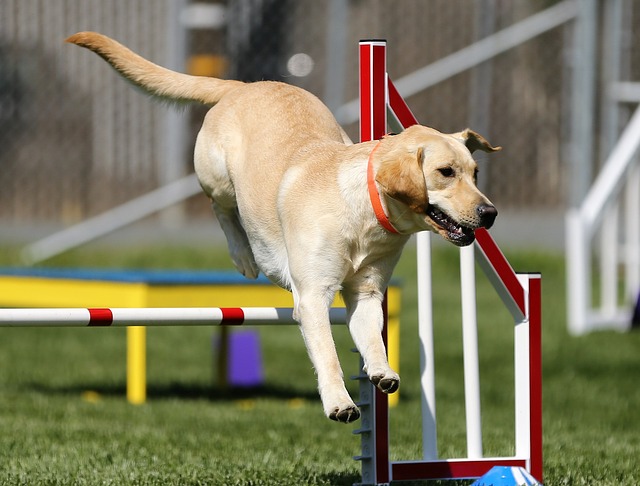
Does your Lab absolutely go crazy for water retrieving? Take a “dock-jumping” class to teach them to retrieve off a dock into the water, and later they can join competitions where their high activity level is seen as a talent and strength, rather than a negative.
Summary: Why Is My Labrador So Hyper?
Labradors may be the most popular dogs in the United States, but their high energy needs and physical demands can be a challenge, and you may see hyperactivity as an issue in your dog.
As a very intelligent, high-energy dog breed, Labs need physical exercise daily and mental stimulation to keep boredom away. Rule out any health issues with your vet, and make sure your environment isn’t causing fear and anxiety leading to hyperactivity.
As always, training is critical for any dog to be a balanced and well-mannered member of the family. Remember that your dog’s temperament influences everything, and find the right positive training to lead your dog in the direction you want them to go.
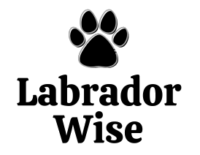
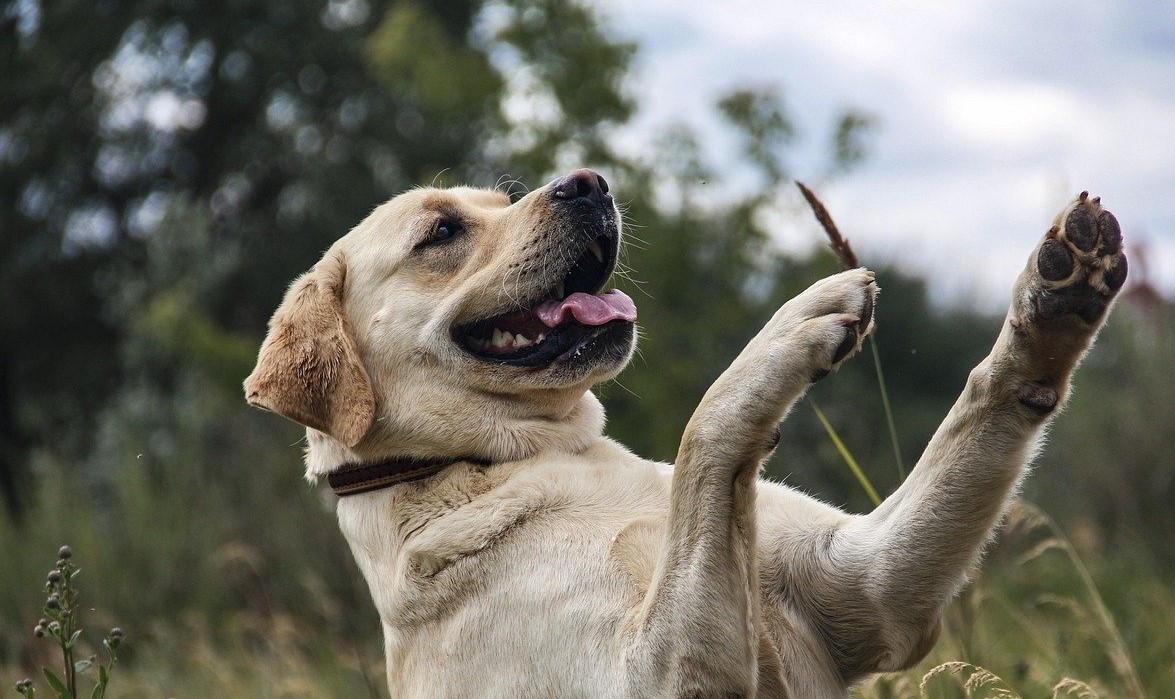
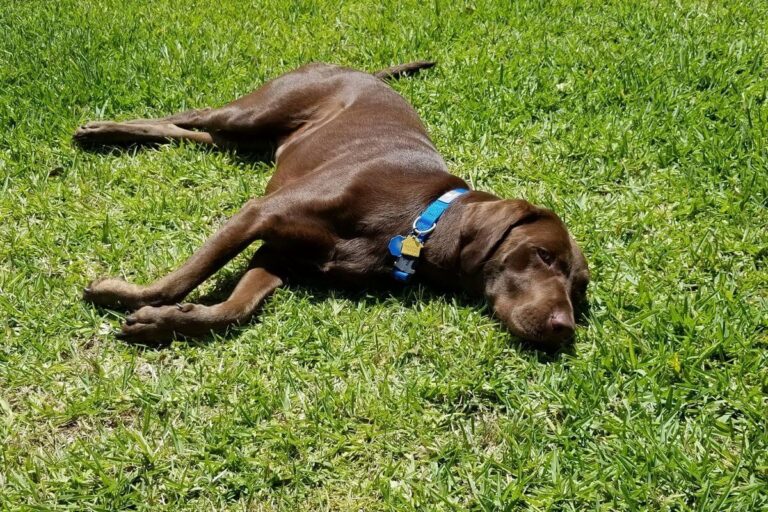

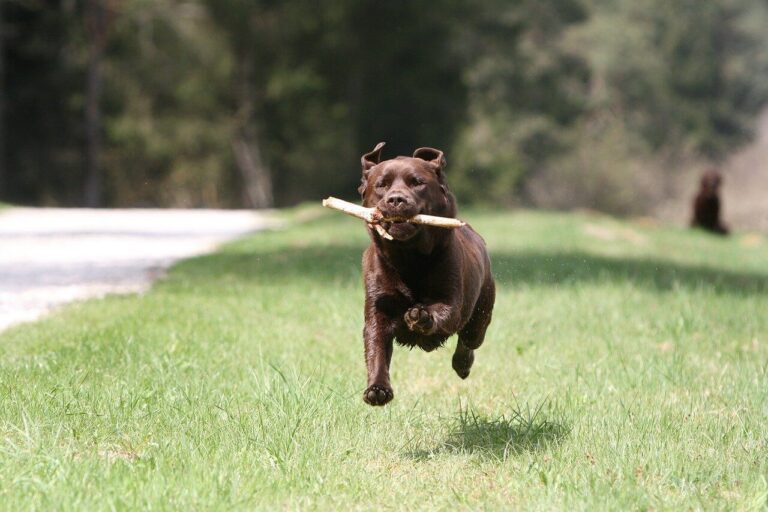

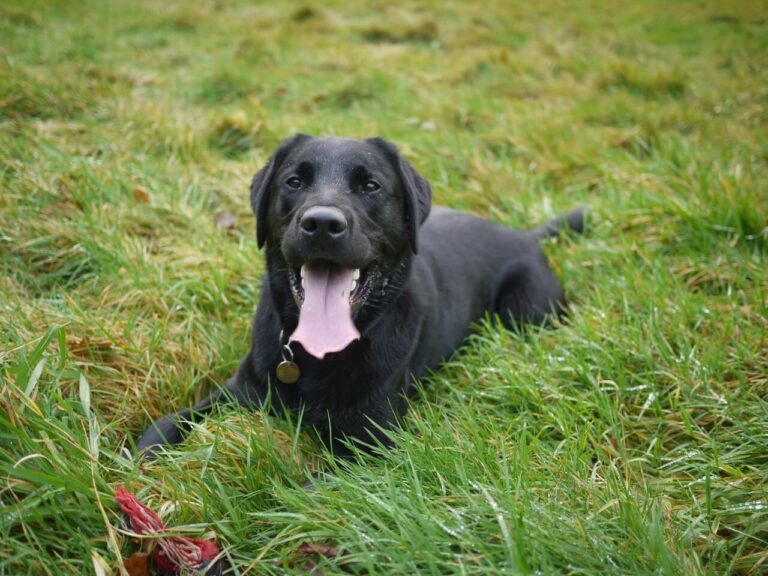

My Annie has full excess to my very large backyard. She likes to run and play with my other 2 dogs, Australian Shepherd, and Huskey mix. I have considered giving her Trazadone to see if this will help her with hyperactivity. Any suggestions will be very much appreciated.
Thanks
Also, ask your veterinarian about what interventions they recommend for dealing with her hyperactivity. Follow their recommendations about medication because they will know your dog best!
My 1 year old female is obsessed with me. We have had her since she was 3 months old. She wants constant attention. She follows me around, puts her foot on my knee every time I sit down. She growls at my 2 other dogs when they get near me and runs to me when the other dogs approach me. My husband is afraid she is going to hurt me because she is strong as an Ox and it’s hard to control her when she gets excited. I have never seen a dog get so excited trying to lick me and climb all over me. I am 75 years old and have had both hips replaced. I fear my husband is going to rehome her if I am unable to control her.
Hi Marilyn, sorry to hear of your Lab’s behavior issues. Did you get her from a breeder? If possible, check with the breeder about the temperament and personality of the other dogs that came from that exact litter (as well as her parents). Also, what training has she had already? Has she done puppy classes or had a dog trainer involved? It sounds like she’s guarded and aggressive with your other dogs, which you are right to be concerned about. We would suggest getting a dog trainer involved right away if you don’t already have one. Tell the trainer exactly what she’s doing with you and your other dogs. You can find a trainer to come to your home and work with her in your home environment, and they can work on curbing her behavior around your other dogs.